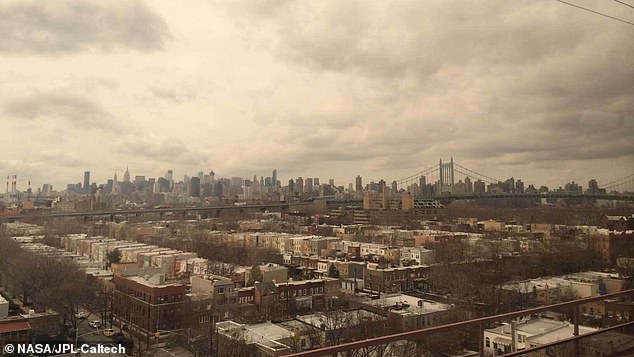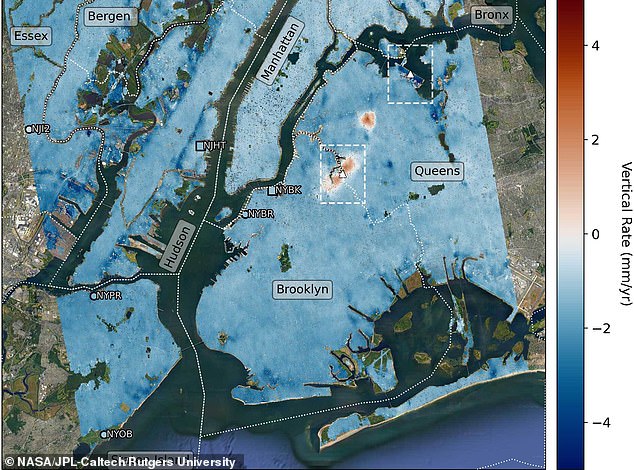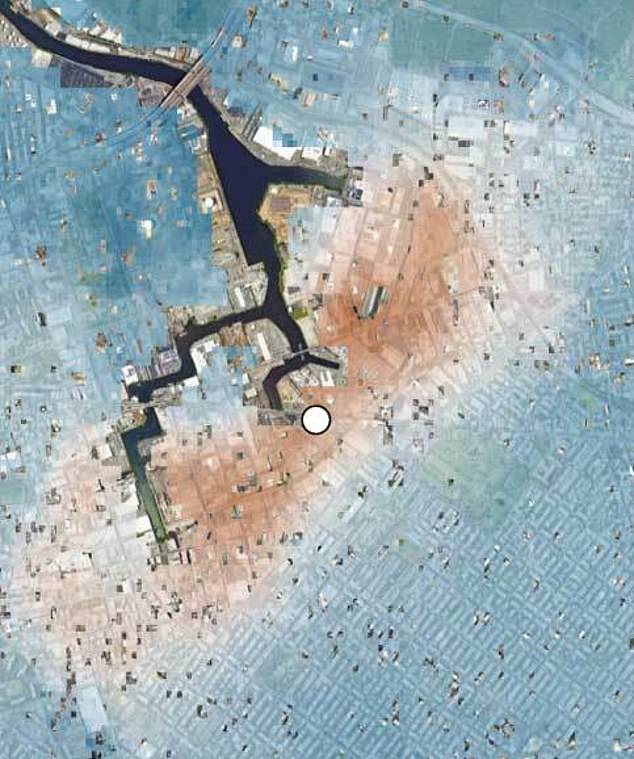New York City IS SINKING: NASA reveals ‘hotspots’ sinking more than TWICE as fast as the entire metropolitan region
NASA has identified several “hotspots” in New York City that are sinking faster than the entire metropolitan region.
Researchers found that the city is sinking at an average rate of 0.06 inches per year, while specific locations, such as an airstrip at LaGuardia Airport and Arthur Ashe Stadium, are falling more than twice as fast.
Other hotspots include Interstate 78, which runs through the Holland Tunnel connecting New York to New Jersey, Coney Island in Brooklyn and Arverne in Queens – all built on man-made fill.
A runway at LaGuardia Airport and Arthur Ashe Stadium is sinking up to 0.18 inches per year, compared to New York City’s average decline of 0.06 inches each year.
As the city sinks under the weight of skyscrapers, the newly identified hotspots are sinking because they sit atop a centuries-old glacier that is retreating.
NASA has identified several “hotspots” in New York City that are sinking at a rapid rate, putting them at greater risk from rising sea levels. Researchers have determined that the city is sinking at an average rate of 0.06 inches per year
The ancient glacier covered most of New England about 24,000 years ago, and a wall of ice more than a mile high covered what is now Albany, New York.
The Earth’s mantle has slowly adapted, a bit like a curved mattress.
New York City, located on land just outside the edge of the ice sheet, is now sinking back down.
NASA scientists worked with researchers from Rutgers University in New Jersey to analyze the 302.6-square-mile city of five boroughs: Manhattan, Queens, Brooklyn, the Bronx and Staten Island.
The team analyzed the upward and downward vertical land movement, or uplift and subsidence, in New York City from 2016 to 2023.
The work involved in the use an interferometric synthetic aperture radar (InSAR) remote sensing technique, which combines two or more 3D observations of the same area to reveal surface motion or topography.

NASA scientists worked with researchers from Rutgers University in New Jersey to analyze the 302.6-square-mile city of five boroughs: Manhattan, Queens, Brooklyn, the Bronx and Staten Island

In mapping vertical land movements across the New York City area, researchers found that the land is sinking an average of about 0.06 inches per year (indicated in blue). They also found a modest increase (shown in red) in Queens and Brooklyn. White dotted lines indicate the boundaries of the provinces/municipalities.
Much of the movement they observed occurred in areas where previous changes to the Earth’s surface—such as land reclamation and landfill construction—made the soil beneath subsequent buildings looser and more compressible.
The study shows that Runway 13/31 at LaGuardia Airport is deteriorating 0.15 inches per year.
This runway was built on a former landfill (and is currently undergoing an $8 billion renovation, partly intended to reduce increasing flooding due to sea level rise.
The Arthur Ashe Tennis Stadium, the world’s largest tennis venue, was sinking 0.45 centimeters per year – this venue was also built on a landfill.
Interstate 78 drops 0.07 inches, and the southern part of Governors Island is sinking 0.03 inches annually.

Runway 13/31 at LaGuardia Airport in Queens is sinking at a rate of about 0.15 inches per year

However, the team also found that some areas showed uneven rise, such as a portion of Newtown Creek, a Superfund site in East Williamsburg, Brooklyn, which is rising by about 0.06 inches.
The lower area was built on top of rubble from the excavations of the Lexington Avenue subway in the early 20th century.
The Army Corps of Engineers oversaw the deposit of 4,787,000 cubic yards of fill on the south side of Governors Island.
Hotspots of the coast At Coney Island, subsidence was observed at a rate of 0.3 inches per year, and Arverne by the Sea in Queens is sinking at 0.04 inches – both built on artificial fill.
Arverne is a neighborhood on the Rockaway Peninsula.
The scientists also found a previously unidentified increase in East Williamsburg, Brooklyn – an increase of about 0.06 inches per year – and in Woodside, Queens, which rose 0.27 inches per year between 2016 and 2019 before stabilizing.
Co-author Robert Kopp of Rutgers University said groundwater pumping and injection wells used to treat contaminated water may have played a role, but further research is needed.
“I’m intrigued by the potential of using high-resolution InSAR to measure these types of relatively short-lived environmental changes associated with uplift,” Kopp said.
The scientists said cities like New York, which are investing in coastal defenses and infrastructure in the face of sea level rise, could benefit from high-resolution estimates of land movements.
